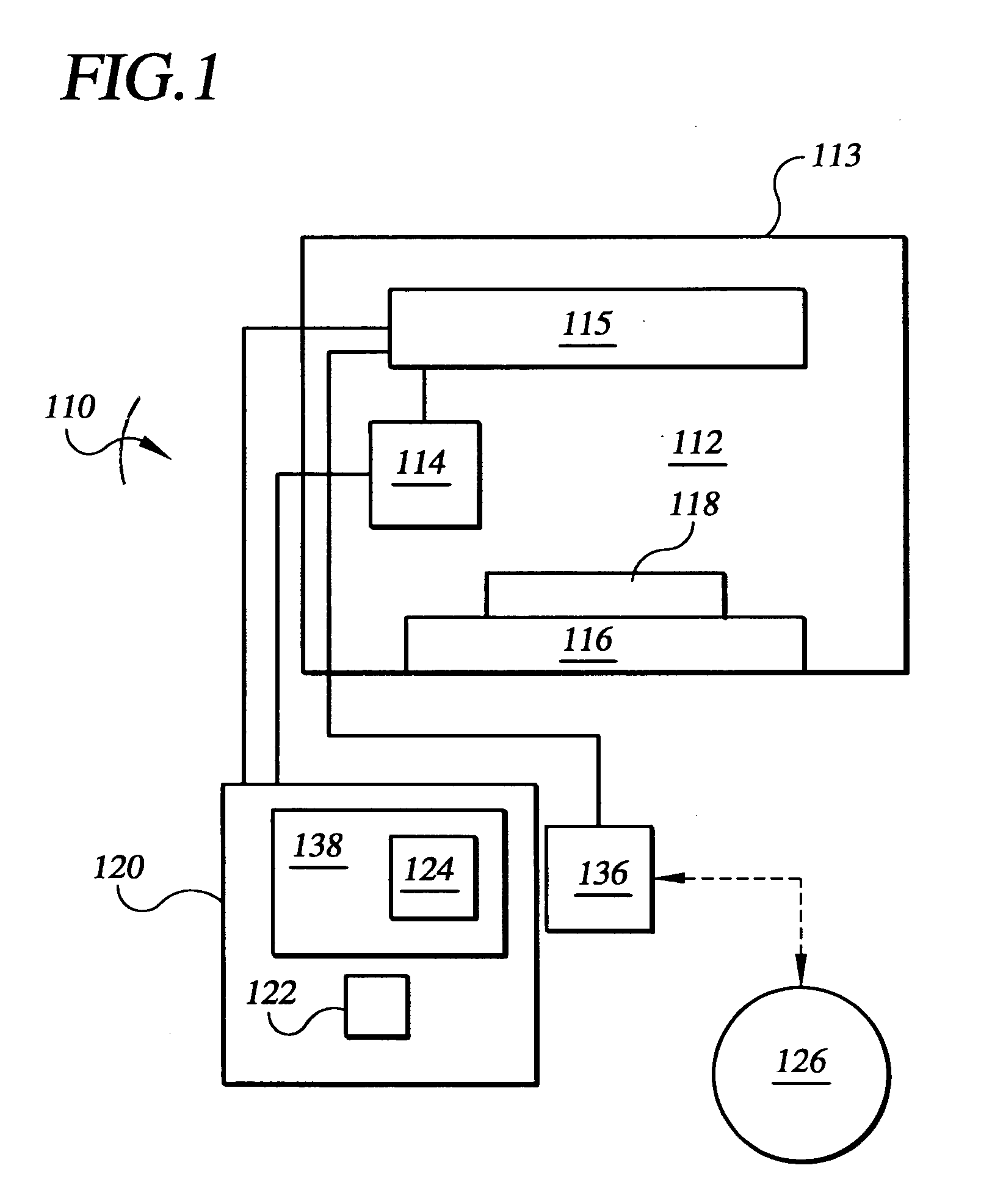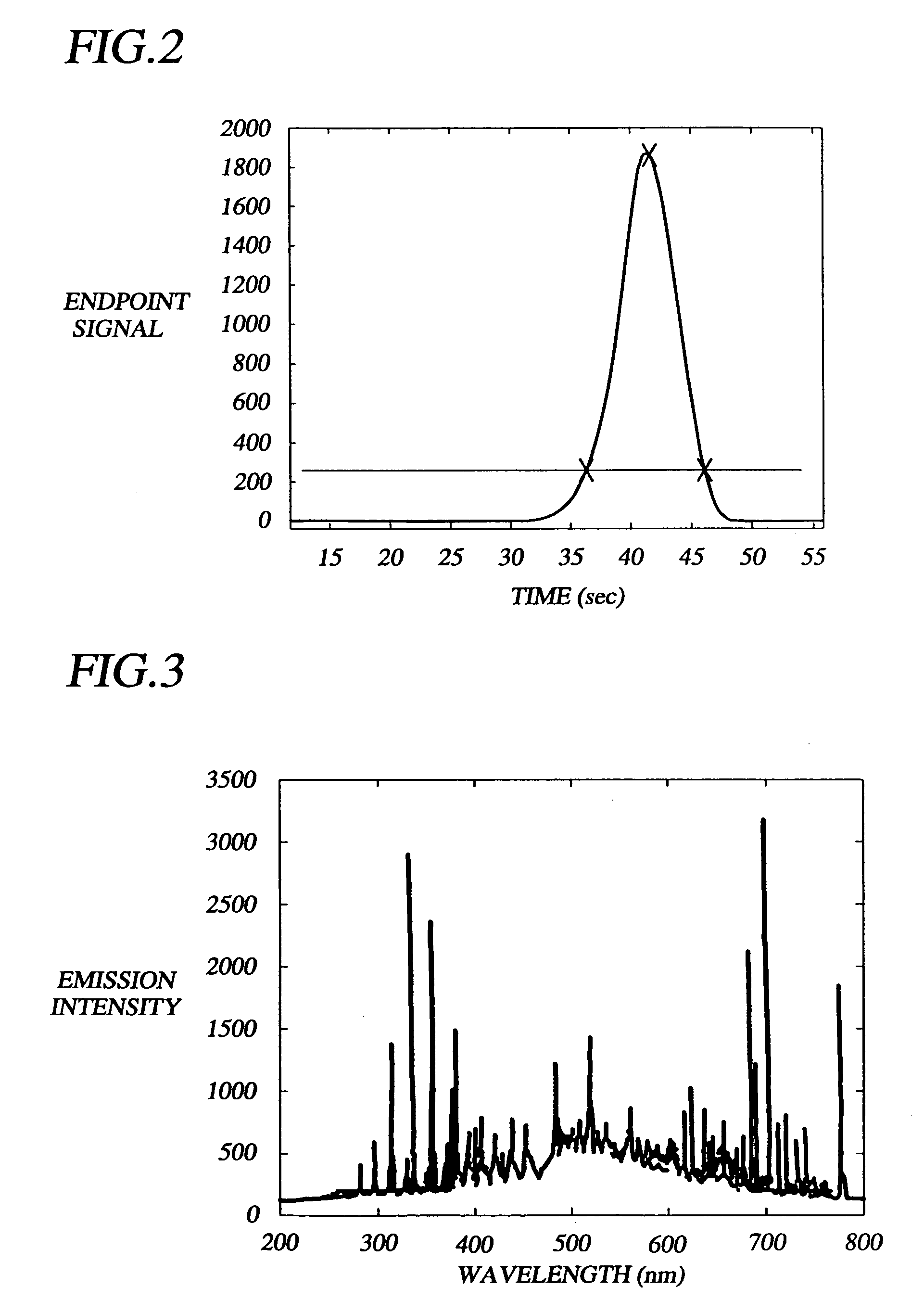Full spectrum endpoint detection
- Summary
- Abstract
- Description
- Claims
- Application Information
AI Technical Summary
Benefits of technology
Problems solved by technology
Method used
Image
Examples
Embodiment Construction
)
[0049]In describing the preferred embodiment of the present invention, reference will be made herein to FIGS. 1–15 of the drawings in which like numerals refer to like features of the invention.
[0050]The present invention provides a powerful and easy-to-use endpoint detection system for semiconductor processing. The invention employs software algorithms and an assembly of readily available hardware. The preferred embodiment of this invention measures the intensity of light emitted by a process plasma as a function of wavelength and time, using optical emission spectroscopy (OES). The method of the invention is applicable to any detection method which provides a large number of process relevant data.
[0051]The system of the present invention preferably employs a device for detecting light emissions from a process plasma, which is, in the embodiment described herein, an optical emission spectrograph with a charge coupling device (CCD) array. The preferred system also includes a comput...
PUM
 Login to View More
Login to View More Abstract
Description
Claims
Application Information
 Login to View More
Login to View More - R&D
- Intellectual Property
- Life Sciences
- Materials
- Tech Scout
- Unparalleled Data Quality
- Higher Quality Content
- 60% Fewer Hallucinations
Browse by: Latest US Patents, China's latest patents, Technical Efficacy Thesaurus, Application Domain, Technology Topic, Popular Technical Reports.
© 2025 PatSnap. All rights reserved.Legal|Privacy policy|Modern Slavery Act Transparency Statement|Sitemap|About US| Contact US: help@patsnap.com



